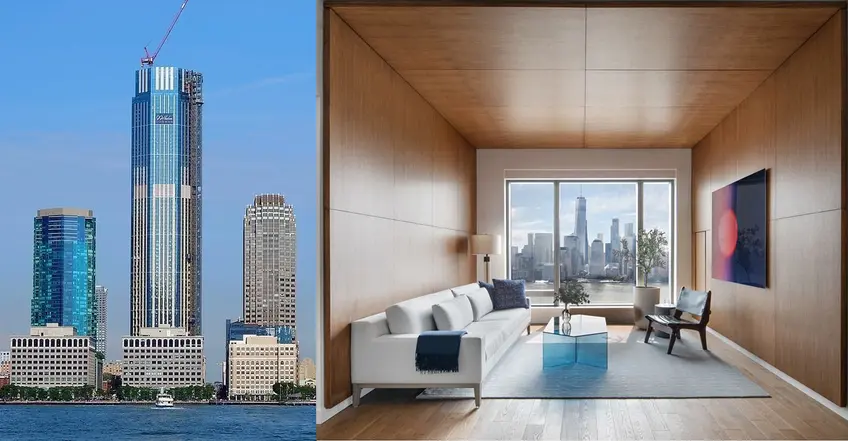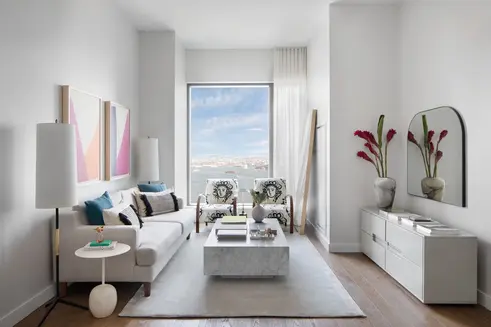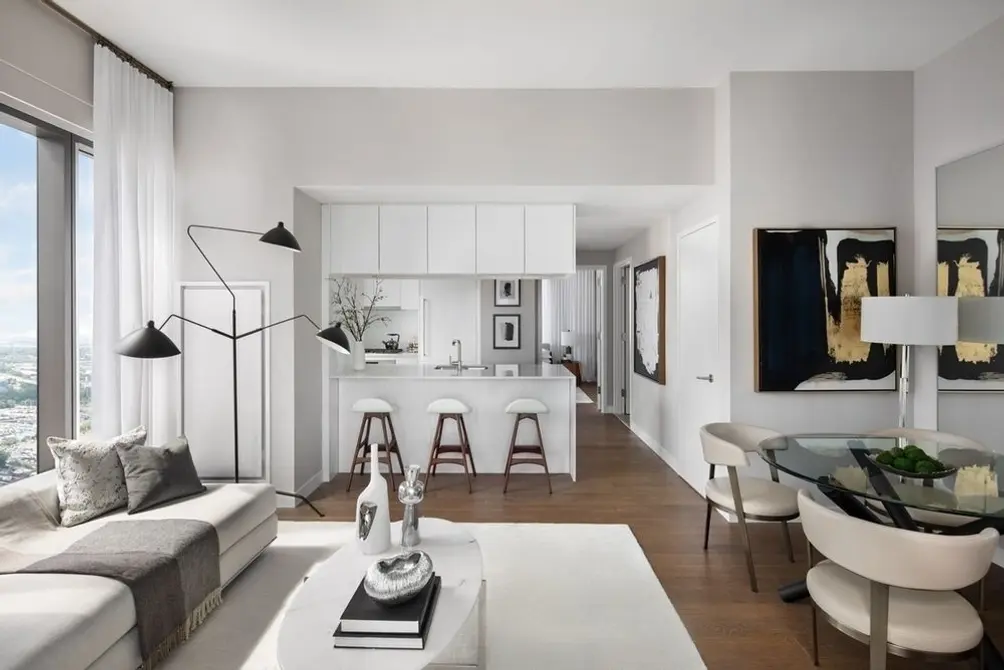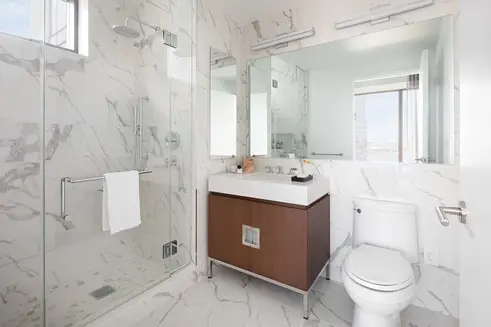 99 Hudson Street, Jersey City. Credit: Perkins Will Architects
99 Hudson Street, Jersey City. Credit: Perkins Will Architects
Over the past few decades, the Jersey City waterfront has transformed almost beyond recognition. Derelict docks, empty lots and crumbling industrial buildings made way for a glittering skyline and streets bustling with office workers, pedestrians, and nightlife. The crown jewel of the new skyline nears completion at 99 Hudson Street, a 79-story tower that now reigns as the tallest building in all of New Jersey.
The 889-foot-tall skyscraper competes with luxury residential towers across the river in Manhattan in more than height. The building stands a block away from the Exchange Place station of the PATH train, which puts Manhattan’s Financial District within a one-stop ride - a shorter commute than even most of Downtown Brooklyn can boast. Moreover, the building’s amenity package goes toe-to-toe with contenders from the Empire State.
As of early February 2020, 99 Hudson has one-bedrooms available from $850K, two-bedrooms from $1.125M, and a 3-bedroom on the 75th floor for $4.088M.



Apartments come with wide-plank oak flooring, a popular finish in latest luxe condos across the NYC, as are floor-to-ceiling windows and in-unit washer/dryers. Kitchens come with lacquered Italian cabinetry and Quartz counters and islands, while the bathrooms are decked out in ceramic Statuario flooring and walls, which extends to walk-in showers with rainwater shower heads.
The salient feature of the 65,000-square-foot amenity package is a massive roof deck atop the building base at the foot of the tower. The centerpiece, an 80-by-50-foot swimming pool, is surrounded by landscaping, cabanas, outdoor grilling and dining stations, and a dog run. Interior features include a game room, a children’s playroom, a bar-equipped screening room, a business center, a demonstration kitchen, a golf simulator, and the Hudson Club Room, complete with a lounge, dining space, and library.
Architect Ming Wu, who spoke to CityRealty about the building in 2018, points out that one of his favorite amenities is a public rather than a private one - the 15,000 square feet of retail at the ground level, which will further animate Jersey City’s ever-more-thriving Downtown. One by one, remaining parking lots, which split asunder existing buildings and create swathes of inhospitable sidewalk, make way for vibrant urban developments such as 99 Hudson.
At the skyline level, the angled pillar makes an effective skyline pairing with the slightly-shorter 30 Hudson Street (formerly known as the Goldman Sachs Tower), which reigned as the tallest building in New Jersey since 2004. In a 2016 feature for 6sqft, CityRealty’s resident architecture critic Carter Horsley compared the former bank tower to the Rock of Gibraltar for its prominent position at the foot of the skyline. 99 Hudson stands nearly equally prominently, situated just a block away from the Hudson River waterfront. Only a handful of squat office buildings separate the tower from the water, so even most of the lower-level units open onto unobstructed panoramas of the Manhattan skyline.
The building’s chevron form faces Manhattan to maximize direct skyline views of the Big Apple. However, dramatic views also open in other directions, particularly from the building’s unobstructed upper half, with a viewshed of 35 miles from the top floors. To the east, beyond the Manhattan skyline, the views penetrate across the harbor past Brooklyn and Queens all the way to Long Island and the Atlantic Ocean. To the south, the view overlooks clear across all of Staten Island and further across the Raritan Bay to the Jersey Shore and central Jersey. In the opposite direction, the panorama stretches along the Palisades up the Hudson River valley. To the west, New Jersey’s urban tapestry stretches for miles and runs up against the rolling ridges of the Appalachian Highlands towards the setting sun.
The architects reconcile the solid feel of a stone-clad building with in-demand floor-to-ceiling windows by using alternating strips of limestone and glass. Most of the base is clad in limestone, massed in a simplified classical manner. According to architect Wu, such classicist references were meant to “convey a sense of reserve and dignity in regards to the architectural expression” in a manner that responds not only to nearby pre-war buildings, but also to stone-clad buildings around the greater New York area as a whole. Art Deco-flaired, alternating bands of limestone and glass in the midsection make way for an all-glass facade at the top, maximizing window coverage for maximum sunlight and views.
It is natural to draw parallels between 99 Hudson and the Brooklyn Point in Brooklyn and the Skyline Tower in Queens, two recently-topped-out “tallest” condo towers in two satellite "downtowns" that symbolizes their respective areas’ resurgence. But whether we are talking about Jersey City, Brooklyn, or Queens, the message is clear: luxury sky-scraping living has definitively spread beyond the confines of the isle of Manhattan.


 6sqft delivers the latest on real estate, architecture, and design, straight from New York City.
6sqft delivers the latest on real estate, architecture, and design, straight from New York City.
